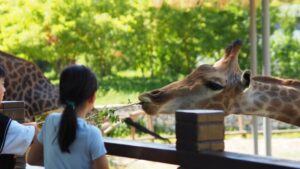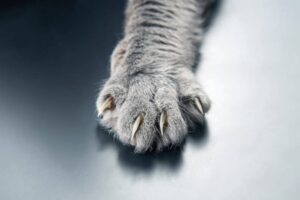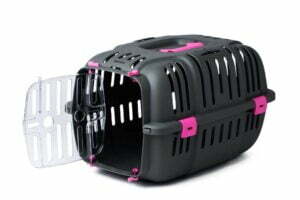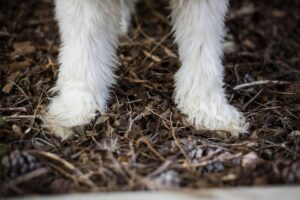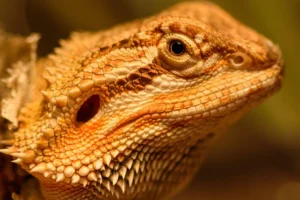Last Updated on 1 week ago by Nicky Johnson
That fresh mint on your kitchen counter smells great—and it might have you wondering if you can share a leaf with your bearded dragon. It’s a great question, showing you’re a thoughtful owner dedicated to your pet’s well-being.
The short answer is yes, bearded dragons can eat mint, but only as a very rare, tiny treat. While not toxic, mint contains compounds that can cause serious health problems if fed too often.
This guide will walk you through the critical risks, the minor benefits, and the only safe way to offer this aromatic herb to your bearded dragon (Pogona vitticeps).
The Quick Answer: A Treat, Not a Staple
Blog Contents
- The Quick Answer: A Treat, Not a Staple
- The Critical Risk: Why Mint Must Be Limited
- The Small Perks of an Occasional Mint Leaf
- How to Safely Prepare and Offer Mint
- Serving Size: How Much Mint Is Safe?
- Bearded Dragon Diet Pyramid: Staples VS Treats
- What About Spearmint, Peppermint, or Catnip?
- Healthier Greens for a Daily Diet
- Frequently Asked Questions (FAQ)
To be clear: mint is not poisonous to bearded dragons. However, it should never be a regular part of their diet.
Think of it as a flavorful garnish, not a core ingredient. Offering one or two small, chopped leaves once or twice a month is the absolute maximum. The risks of overfeeding far outweigh any nutritional rewards.
The Critical Risk: Why Mint Must Be Limited
The main reason mint is restricted for bearded dragons is its high concentration of oxalates. Understanding this compound is key to protecting your pet from a common and devastating illness.
The Problem with Oxalates and Calcium
Oxalates, or oxalic acid, are naturally occurring compounds found in many plants, including mint, spinach, and kale. They act as “anti-nutrients.”
Their chemical structure allows them to bind with essential minerals. When they bind with calcium in your bearded dragon’s food, they form calcium oxalate. This new compound cannot be absorbed by your dragon’s digestive system. In essence, the oxalates “steal” the calcium from their meal, rendering it useless.
How This Leads to Metabolic Bone Disease (MBD)
This calcium theft can trigger a dangerous chain reaction. Your dragon’s body needs a constant supply of calcium for everything from muscle function to nerve signaling. When it can’t get calcium from food, it’s forced to pull it from the only other source available: its own bones.
This steady depletion of calcium from the skeleton leads to Metabolic Bone Disease (MBD). MBD is a painful and crippling condition that causes a dragon’s bones to become soft, weak, and deformed.
Signs of MBD include:
- A soft or “rubbery” jaw
- Tremors or twitching in the limbs
- Weakness and lethargy
- Paralysis in severe cases
The good news is that MBD is entirely preventable with a proper, balanced diet that correctly manages the calcium to phosphorus ratio and limits high-oxalate foods.
The Small Perks of an Occasional Mint Leaf
While the risks are significant, a tiny piece of mint offered very rarely can have a couple of minor benefits. The primary value is in enrichment, not nutrition.
- Dietary Variety: The strong scent and unique flavor of mint can provide excellent sensory enrichment. For an omnivore accustomed to a routine salad mix, a new taste can be an exciting way to prevent dietary boredom.
- Hydration: Like most fresh greens, mint has high water content and can contribute a tiny amount to your pet’s overall hydration.
- Trace Vitamins: Mint contains small amounts of Vitamin A and Vitamin C. However, the safe serving size is so small that these vitamins are much better sourced from daily staple greens.
How to Safely Prepare and Offer Mint
If you decide to offer mint as a rare treat, following these steps is essential for your pet’s safety.
Choose Fresh, Organic Mint
Always use fresh, organic mint leaves to avoid pesticides. Never offer dried mint, mint essential oils, or mint-flavored extracts. These are far too concentrated and can be harmful.
Wash and Chop Finely
Rinse one or two small leaves under cool water. Pat them dry and chop them finely. Smaller pieces are easier to mix into a salad, preventing your dragon from eating only the mint.
Mix, Never Serve Alone
This is the most important step. Never feed mint leaves by themselves. Always mix the tiny, chopped pieces into a large salad made from healthy, low-oxalate staple greens. This dilutes the mint and ensures your pet gets a nutritious, balanced meal.
Serving Size: How Much Mint Is Safe?
Here is a simple, definitive rule to remember:
One to two small leaves, no more than once or twice a month.
This tiny amount is enough for your bearded dragon to experience the flavor without posing a significant risk to its calcium absorption.
Bearded Dragon Diet Pyramid: Staples VS Treats
Understanding where different foods fit into your bearded dragon’s diet is crucial. A healthy diet should consist of about 80% vegetables/greens and 20% insects.
| Food Category | Frequency | Examples |
| Staple Foods | Daily (80% of diet) | Collard Greens, Dandelion Greens, Mustard Greens, Turnip Greens, Butternut Squash, Dubia Roaches, Crickets |
| Occasional Foods | 1-2 times per week | Carrots, Bell Peppers, Squash, Berries, Apples |
| Rare Treats | 1-2 times per month | Mint, Spinach, Kale, Basil, Cilantro, Banana |
| Never Feed | Never | Avocado, Rhubarb, Onion, Fireflies, Wild-Caught Insects |
What About Spearmint, Peppermint, or Catnip?
The herb aisle can be confusing. Here’s what you need to know.
- Spearmint vs. Peppermint: Both spearmint and peppermint have similar, high levels of oxalates. Neither is safer than the other. The feeding rules are the same for both: treat them as a rare garnish.
- A Note on Catnip: Catnip is part of the mint family, but it is not recommended for bearded dragons. It offers no nutritional value, and its neurological effects on reptiles are poorly understood. It’s always best to stick to foods known to be safe for reptiles.
Healthier Greens for a Daily Diet
To build a truly healthy diet, focus on staple greens that are low in oxalates and have an excellent calcium-to-phosphorus ratio. These are fantastic choices for your bearded dragon’s daily salad:
- Collard Greens
- Dandelion Greens
- Mustard Greens
- Turnip Greens
- Butternut Squash
- Escarole
- Alfalfa
Frequently Asked Questions (FAQ)
Can baby bearded dragons eat mint?
No. It is strongly recommended that you do not give mint to baby or juvenile bearded dragons. Their bodies are growing rapidly and have a critical need for calcium to develop strong bones. Even a small amount of a high-oxalate food can disrupt their development.
Can I plant mint in my bearded dragon’s enclosure?
This is not a good idea. While a bioactive vivarium is appealing, planting live mint would allow your dragon to eat it freely. This makes it impossible to control their intake and creates a significant, ongoing risk for MBD.
What should I do if my dragon accidentally ate a lot of mint?
If your bearded dragon ate a large amount of mint, monitor them closely. A single incident is unlikely to cause immediate harm, but you should ensure their next several meals are rich in calcium and low in oxalates. If you notice any signs of distress or symptoms of MBD like twitching or weakness, contact a qualified exotic veterinarian immediately.
What other herbs are safe for bearded dragons?
Other herbs like basil, cilantro, and parsley fall into the same category as mint: safe only as a rare treat in tiny amounts. Chop one or two leaves and mix them into a large salad no more than once or twice a month to provide variety and enrichment.
